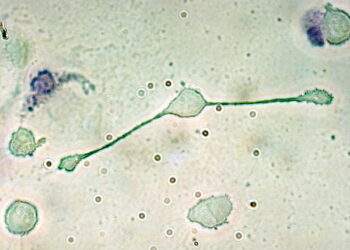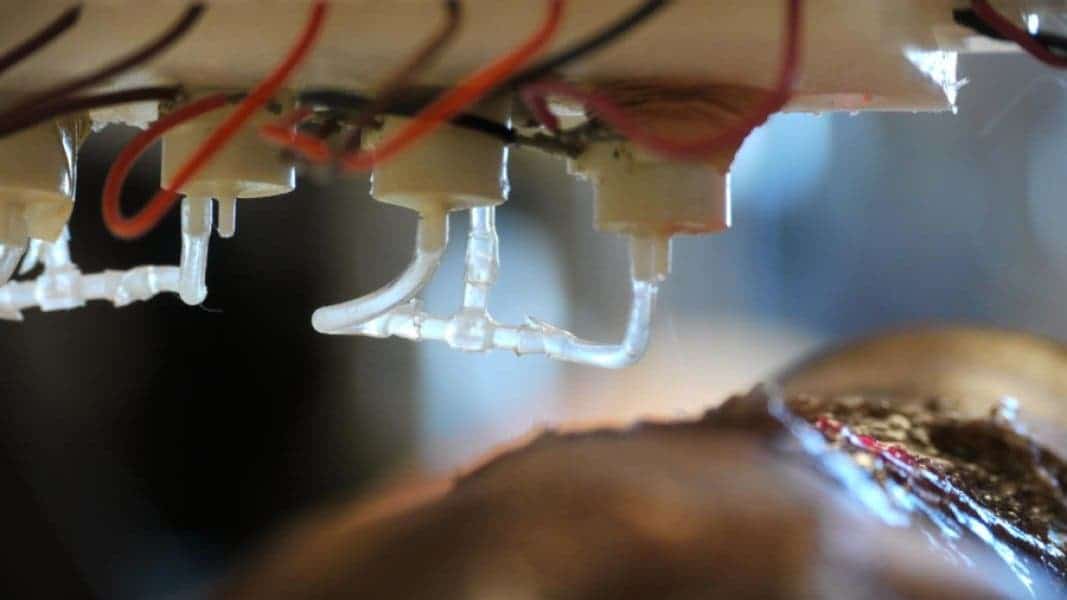
Hundreds of millions of people around the world live with chronic inflammation, a condition where the body’s immune system never fully switches off. For these individuals, wounds often become chronic because the body gets stuck in a loop.
Normally, the immune system kicks off an inflammatory response to clean up damaged tissue and fight off infection. After that, it transitions to a healing phase. But in chronic wounds, this transition never happens. The immune system remains constantly active, even when the original threat is gone, fueling a cycle that prevents the wound from healing.
Börte Emiroglu, a biomedical engineer turned start-up founder, has found a way to change that. Her innovation tackles this confusion directly.
“We want to guide a wound out of the inflammatory state and give it the right instructions for healing,” says Emiroglu. “We want to aid the tissue to signal that now is the time for regeneration.”
And the key to the approach is a sponge-like hydrogel made from microscopic beads called microgels.
Clever Gels
These ordinary gels are engineered to be porous and soft. They’re also clever, in more ways than one. They can adapt to different kinds of tissue, for one. But, more importantly, they bind to specific molecules.
Emiroglu calls this process selective sequestration. Whereas a regular microgel would absorb everything like a sponge, these only bind to the molecules that keep telling the body to continue the inflammation process. One key culprit is interleukin-6 (IL-6), which is often elevated in chronic wounds. Using DNA-based “aptamers,” short strands of synthetic DNA that can be designed to bind with extreme precision to specific targets, Emiroglu’s microgels can grab IL-6 molecules from the wound fluid and hold them back from doing further damage. Essentially, this removes the most troubling, inflammation-causing compounds.
But the gel doesn’t stop there. Some of the microgels are loaded with a molecule called VEGF-A, which promotes the growth of new blood vessels. This dual function, removing harmful signals while releasing helpful ones, is what makes the dressing truly intelligent.
“We don’t want to just absorb anything and everything, like a kitchen sponge does; we need to selectively remove the pro-inflammatory molecules that wreak havoc in the local tissue, while at the same time initiating processes that promote healing,” says Emiroglu.
A Promising Approach

The operating principle of this sponge-like material was detailed in a recent paper published in Advanced Healthcare Materials. Emiroglu and her colleagues showed that their granular hydrogel allows molecules to diffuse faster than in standard hydrogels, thanks to its highly porous architecture. This was further confirmed in lab tests. But the challenge is deploying this, and at scale.
In addition to being painful and uncomfortable, inflamed wounds are expensive to treat. They cost healthcare systems billions of dollars annually. Worse, they are a gateway to more severe conditions like infections and amputations. Today’s treatments, often limited to mechanical suction or plain dressings, don’t address the root cause: molecular confusion in the wound environment. Immunosponge does.
So, Emiroglu believes there’s also a business case for this technology. Now, through ETH’s Pioneer Fellowship program, she and her co-founder Apoorv Singh have launched a start-up with a clear mission — transform chronic wound care from reactive bandaging to active regeneration.
From the Lab to the Hospital
“We come from a pure research background, where we rarely come into contact with users,” she says. “Now, we’re talking to doctors, nurses, market leaders and other professionals and getting to know their point of view.”
It’s not an easy process, but it’s an important one. Above all, Emiroglu states, they’re not rushing to put the product out as soon as possible. Instead, they’re taking the time to make sure it works right. “We are deliberately taking our time with the development. It’s not about getting something onto the market as quickly as possible; it’s about creating something with long-term value.” She says that in a few years, Immunosponge could become a clinical reality.
More broadly, Emiroglu’s work points to a shift in medicine: from passive materials to intelligent ones. Materials that don’t just sit on the body but communicate with it, learn, and even heal. This same technology could one day help heal bones, tendons, or even internal injuries — anywhere that inflammation needs to be dialed down and healing turned on.
Emiroglu says she likes to unwind by cooking. “I enjoy cooking for guests and seeing the joy on their faces.” With her work, she’s very close to doing the same thing, just at a much greater scale.






